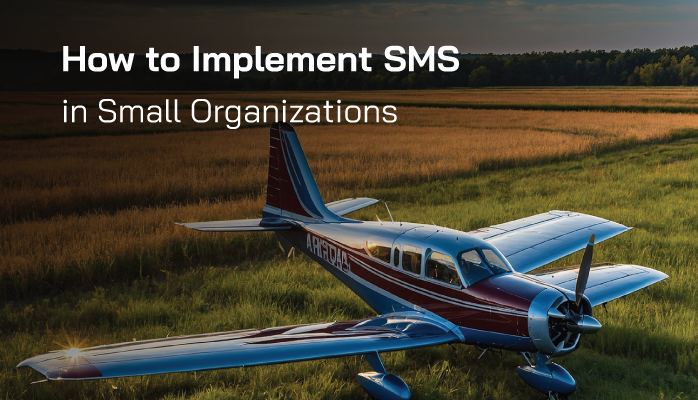
Introduction to Aviation SMS for Single-Pilot Operators
The Federal Aviation Administration (FAA) mandates Safety Management Systems (SMS) for various aviation operations, including single-pilot operators under 14 CFR § 5.3(c). This regulation, effective May 28, 2024, requires single-pilot operators under Part 135 (on-demand and commuter operations) and Part 91.147 (air tour operators) to develop and submit an SMS implementation plan by November 28, 2024. For single-pilot operations, the FAA allows simplified processes to make compliance manageable, recognizing the unique challenges of small-scale operations.
This comprehensive guide explains the SMS requirements, outlines how to create an effective implementation plan, and provides practical tips for single-pilot operators to meet FAA standards while enhancing safety. Whether you're a Part 135 charter pilot or an air tour operator, this article will help you navigate the process efficiently.
Understanding SMS Requirements for Single-Pilot Operations
The FAA's SMS framework, detailed in 14 CFR Part 5, is designed to proactively manage safety risks. For single-pilot operators, the requirements are tailored to match the operation's size and complexity, as outlined in Advisory Circular (AC) 120-92D. Here’s a breakdown of the key requirements:
Applicability and Deadlines
- Who Must Comply: Single-pilot operators holding a Part 135 certificate or a Part 91.147 Letter of Authorization (LOA).
- Submission Deadline: Submit an SMS implementation plan to the FAA by November 28, 2024.
- Implementation Deadline: Fully implement the SMS within 36 months of plan submission, by November 28, 2027.
- FAA Approval: The FAA will review and approve the plan by November 28, 2025.
Simplified Processes
Single-pilot operators are exempt from certain requirements that apply to larger organizations, such as designating multiple management personnel. The pilot typically serves as the accountable executive, safety manager, and primary decision-maker. Simplified processes include:
- Using basic tools like Google Forms or Excel for hazard reporting.
- Maintaining a simple log or checklist for safety risk management (SRM).
- Focusing on high-impact risks, such as weather, fatigue, or maintenance issues.
Core SMS Components
The SMS implementation plan must address four core components, scaled to the single-pilot operation:
- Safety Policy: A documented commitment to safety, signed by the pilot, including a non-punitive reporting system.
- Safety Risk Management (SRM): Processes to identify hazards, assess risks, and implement controls.
- Safety Assurance (SA): Methods to monitor safety performance through self-audits or data reviews.
- Safety Promotion: Training and communication to foster a safety culture, such as self-directed learning.
Step-by-Step Guide to Creating an SMS Implementation Plan
Developing an SMS implementation plan for a single-pilot operation requires careful planning but can be straightforward with the right approach. Follow these steps to ensure compliance and create a practical plan:
Step 1: Review Regulatory Guidance
Start by familiarizing yourself with 14 CFR Part 5 and AC 120-92D. Additional resources include:
- FAA’s SMS website (www.faa.gov).
- FAA Notice 8900.700 for interim guidance.
- ICAO’s Safety Management Manual (Doc 9859).
Step 2: Develop the Organizational System Description
Create a brief description of your operation, including:
- Certificate type (Part 135 or Part 91.147).
- Scope of operations (e.g., VFR air tours, on-demand cargo flights).
- Aircraft used and operational environment (e.g., rural airports, coastal routes).
- Key personnel (the pilot as accountable executive).
Step 3: Design Simplified SMS Processes
Tailor the four SMS components to your operation:
- Safety Policy: Write a concise policy statement. Example: “I commit to prioritizing safety by identifying and mitigating risks in all flights.”
- SRM: Develop a pre-flight checklist to identify hazards (e.g., weather, fatigue) and a simple risk matrix (likelihood vs. severity).
- SA: Track safety trends, such as maintenance issues, in a logbook or spreadsheet.
- Safety Promotion: Subscribe to FAA safety newsletters or attend NBAA webinars.
Step 4: Draft the Implementation Plan
Structure the plan to include:
- Timeline: Outline milestones, such as drafting the safety policy within 3 months.
- Processes: Describe simplified SRM and SA methods.
- Compliance: Explain how you’ll meet Part 5 requirements using free FAA templates.
Step 5: Submit the Plan
Submit the plan to the FAA’s Certificate Management Office (CMO) or SMS Program Office by November 28, 2024. Contact 9-NATL-SMS-ProgramOffice@faa.gov for submission instructions.
Step 6: Implement and Maintain the SMS
Begin implementing the SMS as outlined, with full compliance by November 28, 2027. Keep records of hazard reports and risk assessments for at least 24 months, per 14 CFR § 5.94.
Practical Tips for Single-Pilot Operators
Here are some actionable tips to streamline SMS compliance:
- Use Free Resources: Leverage FAA templates, SKYbrary (skybrary.aero), or Aviation Safety Network (aviation-safety.net).
- Prioritize Key Risks: Focus on hazards like weather, fatigue, or maintenance, which are critical for single-pilot flights.
- Keep It Simple: Use tools like Google Forms for hazard reporting or a notebook for SRM logs.
- Seek Support: Consult the FAA SMS Program Office or industry experts like PAI Consulting for guidance.
- Start Early: Begin planning now to avoid last-minute stress before the November 2024 deadline.
Common Challenges and Solutions
Single-pilot operators may face challenges in SMS implementation. Here’s how to address them:
- Challenge: Limited time and resources.
Solution: Use free FAA/ICAO templates and focus on high-impact risks. - Challenge: Lack of SMS expertise.
Solution: Attend NBAA webinars or review FAA’s SMS videos. - Challenge: Resistance to formal processes.
Solution: Recognize that pre-flight checks align with SMS principles and formalize them simply.
Benefits of SMS for Single-Pilot Operators
Implementing an SMS offers significant benefits, even for small operations:
- Enhanced Safety: Proactively identify and mitigate risks, reducing incident likelihood.
- Regulatory Compliance: Meet FAA and ICAO standards, avoiding penalties.
- Operational Efficiency: Streamline safety practices, saving time and resources.
- Improved Reputation: Demonstrate a commitment to safety, boosting customer trust.
FAA and Industry Resources
Leverage these resources to support your SMS implementation:
- FAA SMS Website: Templates, videos, and guidance (www.faa.gov).
- AC 120-92D: Detailed SMS guidance for small operators.
- SMS Program Office: Contact 9-NATL-SMS-ProgramOffice@faa.gov.
- NBAA: Webinars and tools for small operators (nbaa.org).
- SMS Pro: Cost-effective SMS software for small operations.
Conclusion
Complying with FAA’s SMS requirements under 14 CFR § 5.3(c) is achievable for single-pilot operators with simplified processes. By submitting an SMS implementation plan by November 28, 2024, and fully implementing the SMS by November 28, 2027, you can enhance safety, meet regulatory standards, and improve operational efficiency. Start early, use FAA resources, and tailor processes to your operation’s needs. For assistance, contact the FAA SMS Program Office or explore industry tools to ensure a smooth compliance journey.
Take the first step today to build a safer, more compliant single-pilot operation!
If your company is growing and you need SMS tools to manage your SMS compliance requirements, SMS Pro offers compliant scalable tools to facilitate SMS compliance.





